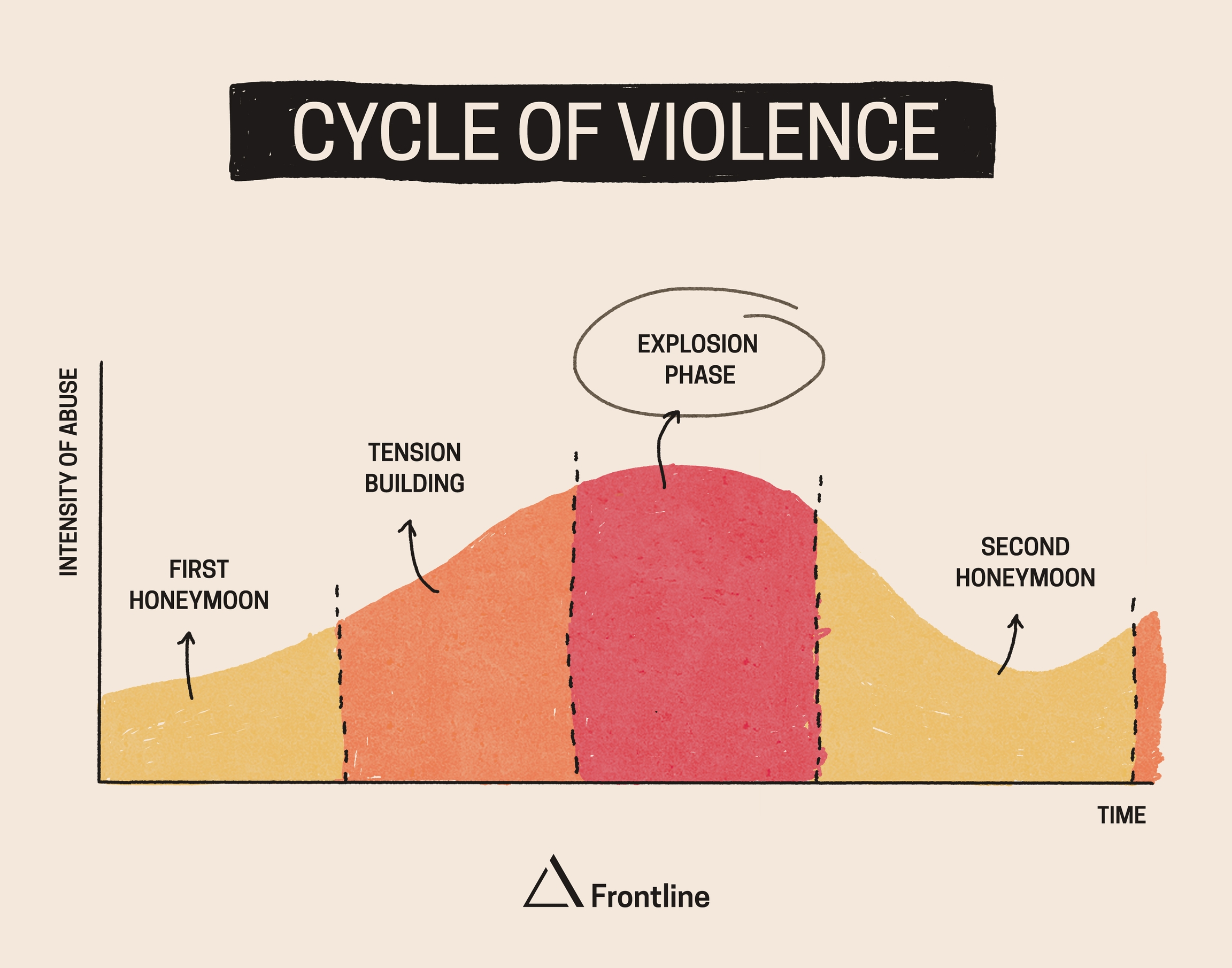How Domestic Abuse Develops
Domestic abuse rarely manifests itself in obvious ways at the beginning of an intimate relationship. Instead, domestic abuse starts like any other relationship: with a honeymoon phase.
The cycle of violence
Developed by the American psychologist Lenore Walker, the cycle of violence can help us understand the cyclical and insidious pattern of abuse.
Just like in any other relationship, the honeymoon phase is characterized by a feeling of euphoria, high levels of passion, an intense feeling of attraction, and a heightened need for intimacy. It’s that magical time pictured in any romantic movie when you fall deeply and madly in love, and everything is perfect. That is presumably why it is hard to recognise when it's love bombing: excessive demonstrations of affection and attention with the goal to gain and exert influence and slowly isolate the person from friends and family.
Unlike in any other relationship, what follows the honeymoon phase is tension building where the intensity of abuse steadily increases over time until it ruptures in the explosion phase. This phase may feel like “walking on eggshells” to victims of domestic abuse. Suddenly, the affectionate and considerate person they fell in love with changes to being erratic and capricious as well as displaying abusive behaviour.
Lastly, the intensity of abuse climaxes in severe physical and/or sexual abuse. It’s after the explosion phase when the cycle of violence renews itself for another round: in the second honeymoon phase, the perpetrator will act apologetic and revert to grand gestures of love.
It is the combination of love, hope, and fear that makes it difficult for victims of abuse to recognise domestic abuse as such in the first place and leave an abusive relationship.
Test your knowledge
Last updated



